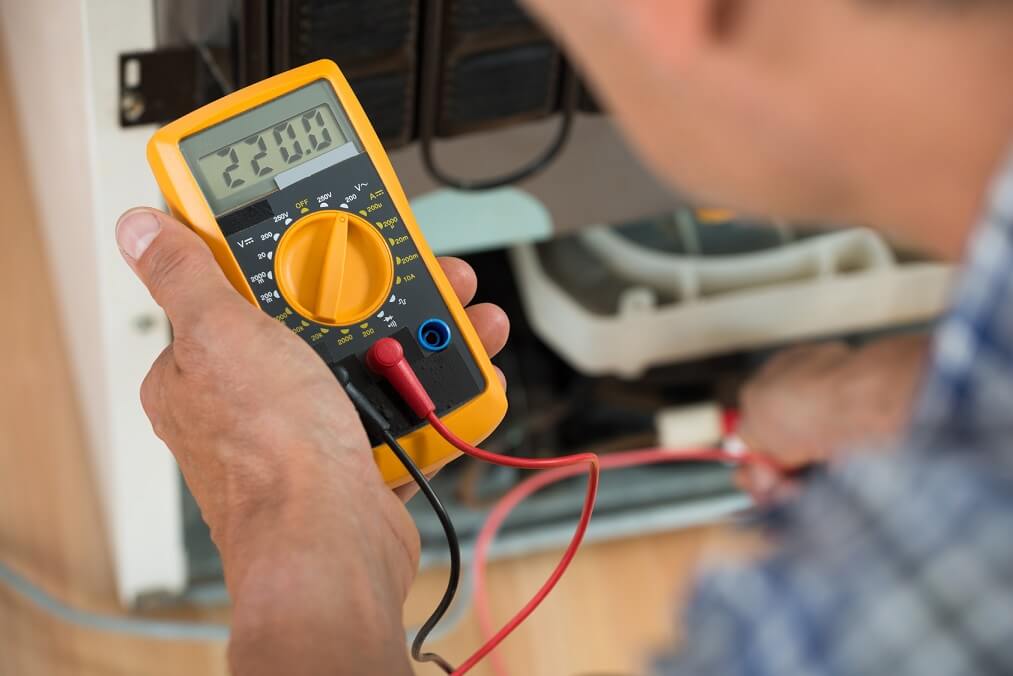If you want to work with electrical cables or electronic components, you will need a series of measuring devices. For all work on electrical installations that carry mains voltage or are to be operated with mains voltage safety comes first! But there are other reasons why the use of measuring devices is required. This overview shows which measuring device is suitable for what purpose.
Duspol for safe voltage testing
With a Duspol you can determine which pole of an installation is the phase.
On the other hand, you can also use the 2-pole voltage tester to determine if a circuit is free of voltage. For example, to test if a socket is voltage free, the test probes are applied to both contacts of the socket. If the indicator light then goes on, there is voltage.
Important: The phase testers found in many households in the form of a small screwdriver with transparent handle are often unreliable. Even if the light indicates no voltage, there can still be voltage.
The reason for such error messages, for example, could be the lack of electrical conductivity of the subsurface or shoes. Then the light will not light up, or only dimly. However, one solution is to hold a grounded object with the free hand, such as a heating pipe. But reliable measurement results can be achieved only with a voltage tester or a multimeter.
Continuity tester for connection check
Continuity tester: These devices will beep to indicate if there is an electrical connection between the contacts. Main purpose: The detection of short circuits and the testing of the proper function of connections such as cables
Multimeter for a wide range of measurements
Multimeters, also known as “Multiple Measurement Devices”, combine various measuring devices in one. Typical features are a voltmeter to measure the voltage, an ammeter for current and an ohmmeter for resistance.
Often multimeters can also be used as a continuity tester. In addition, multimeters can be used when it comes to measurements around the design of circuits. In short: Multimeters are the ideal measuring instruments when it comes to work around the house electrical system.
The trade selection is huge, important when purchasing are criteria such as area of use (house electrical system, car, model building), measuring accuracy, auto range, CAT category and counts, i.e. the resolution of the built-in screen.
Oscilloscope for the display of the representation of the temporal progression of electrical voltages
An oscilloscope measures voltage exactly like a multimeter. Special feature: Oscilloscopes can graphically represent different electrical voltages in a configurable time window.
You create two-dimensional characteristic graphs on a screen where the horizontal axis represents time and the vertical axis the corresponding voltage. Another advantage of the oscilloscope: Multimeters are only calibrated for sinusoidal AC voltages.
If the voltage has a different shape, these devices show incorrect values. Only an oscilloscope can detect the voltage form and correctly measure the values! It is therefore the most important tool for electrical engineers, for example, who want to check the proper functioning of certain parts. In comparison to the multimeter, the operation is more difficult and requires technical knowledge.
Image: Fotolia, 128940608, Andrey Popov













